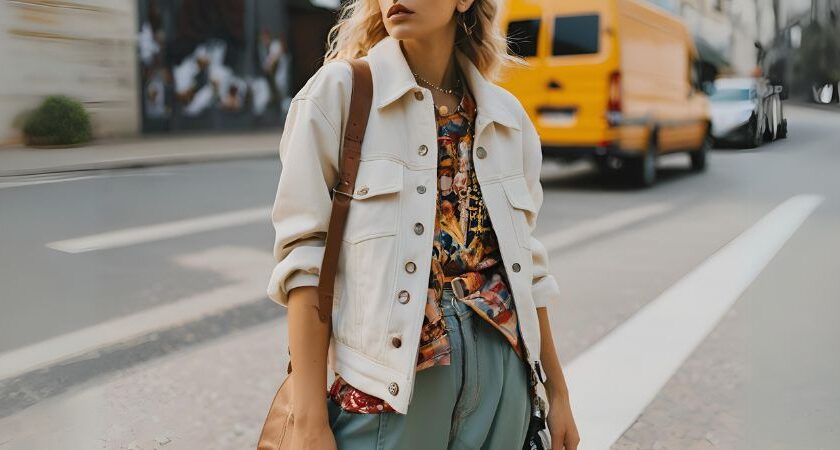Street style clothing has emerged as a dynamic and evolving fashion trend that resonates with individuality, creativity, and urban culture. Unlike the rigid confines of high fashion, street style reflects real people, their lifestyles, and the bustling streets they navigate daily. With its roots deeply embedded in subcultures like skateboarding, hip-hop, and punk, street style has grown into a global phenomenon influencing the fashion industry at large.
The Evolution of Street Style
1. From Subculture to Mainstream
Street style clothing has humble beginnings in the rebellious spirit of youth subcultures. In the 1970s and 1980s, punk rockers and skaters adopted distinctive looks as a form of self-expression and defiance against societal norms. Baggy jeans, graphic tees, leather jackets, and sneakers became staples of these movements. Over time, what started as an underground trend began to gain attention from fashion designers and media, eventually making its way to the mainstream.
2. The Rise of Social Media
The digital age has played a pivotal role in popularizing street style clothing. Platforms like Instagram and TikTok have turned ordinary individuals into style icons, giving streetwear enthusiasts a platform to showcase their outfits. Hashtags like #streetstyle and #ootd (outfit of the day) have become global forums for fashion inspiration. This democratization of fashion has blurred the lines between high-end and casual, creating a melting pot of ideas and trends.
Key Elements of Street Style Clothing
1. Versatility and Comfort
One of the hallmarks of street style clothing is its emphasis on practicality. Loose-fitting silhouettes, breathable fabrics, and layering options cater to comfort while maintaining a trendy aesthetic. Hoodies, oversized jackets, and joggers exemplify this balance between style and ease.
2. Statement Pieces
Street style thrives on bold, eye-catching elements that make a statement. Graphic tees featuring striking designs, logos, or cultural references are a popular choice. Accessories like bucket hats, chunky sneakers, and crossbody bags also play a crucial role in completing the look.
3. Personalization and DIY Aesthetics
The DIY culture of streetwear encourages individuality. Patches, pins, and hand-painted designs allow wearers to add a personal touch to their outfits. Customization not only enhances uniqueness but also celebrates the wearer’s creativity.
Influential Streetwear Brands
1. Supreme
Supreme is arguably the most iconic name in streetwear. Founded in 1994, the brand’s collaborations with artists, musicians, and luxury labels have cemented its status as a cultural powerhouse. Limited-edition drops, known as “drops,” create a sense of exclusivity and demand among fans.
2. Off-White
The brainchild of the late Virgil Abloh, Off-White bridges the gap between streetwear and high fashion. Known for its signature quotation marks and diagonal stripes, the brand redefines street style with a modern, artistic twist.
3. Nike and Adidas
Both Nike and Adidas have played instrumental roles in shaping street style. Iconic sneaker lines like Nike’s Air Jordan and Adidas’s Yeezy have become must-have items, symbolizing the fusion of athletic and urban fashion.
Cultural Impact of Street Style
1. A Platform for Social Commentary
Street style clothing often serves as a canvas for social and political messages. Slogans on t-shirts or accessories can express opinions on issues like equality, climate change, or mental health, turning fashion into a medium for activism.
2. Breaking Gender Norms
Streetwear has challenged traditional gender norms by embracing unisex designs and oversized fits. This inclusive approach allows individuals to experiment with their style without conforming to societal expectations.
3. Celebrating Diversity
From Tokyo’s Harajuku district to New York’s SoHo streets, street style reflects the diverse cultures and identities that influence fashion. It’s a celebration of global connectivity and the shared language of clothing.
Tips for Embracing Street Style
1. Start with Basics
Begin with versatile wardrobe staples like neutral-toned t-shirts, denim jackets, and comfortable sneakers. These pieces serve as the foundation for building stylish outfits.
2. Experiment with Layers
Layering is a key aspect of street style. Combine hoodies with blazers, or pair oversized coats with slim-fit trousers to create visually interesting ensembles.
3. Don’t Shy Away from Accessories
Accessories like beanies, chains, and statement belts can elevate your outfit. They’re an easy way to inject personality and flair into your look.
4. Stay True to Yourself
The essence of street style lies in authenticity. Choose pieces that resonate with your personality and make you feel confident. Don’t be afraid to break rules or mix and match trends to create a look that’s uniquely yours.
The Future of Street Style Clothing
1. Sustainability and Ethical Practices
As awareness about environmental issues grows, sustainable fashion is becoming a key focus in streetwear. Brands are exploring eco-friendly materials and ethical production methods to align with the values of conscious consumers.
2. Digital Fashion
The rise of virtual reality and NFTs (non-fungible tokens) is paving the way for digital fashion. Virtual streetwear pieces are becoming popular in gaming and social media platforms, expanding the definition of street style.
3. Inclusivity and Representation
Future trends in street style will likely emphasize greater inclusivity, with brands showcasing diverse body types, cultures, and genders in their campaigns. This shift reflects the broader societal push for representation and equality.
FAQs
What is street style clothing?
Street style clothing refers to a fashion movement that originated from urban culture and subcultures such as skateboarding, hip-hop, and punk. It emphasizes individuality, creativity, and self-expression, often characterized by casual yet stylish items like hoodies, sneakers, graphic tees, and oversized jackets.
What clothing is considered streetwear?
Streetwear includes comfortable and trendy pieces such as graphic t-shirts, joggers, hoodies, oversized jackets, sneakers, and baseball caps. It often features bold logos, unique prints, and a mix of casual and statement elements that reflect urban culture and personal style.
How do I dress more street style?
To dress in street style:
- Start with versatile basics like sneakers, joggers, and graphic tees.
- Experiment with layering hoodies, jackets, or coats.
- Add accessories like beanies, chains, or statement bags.
- Incorporate bold prints or logos for an urban edge.
- Stay true to your personality by customizing your look.
What are high street clothes?
High street clothes refer to fashion items sold by popular retail brands typically found on main shopping streets. These brands offer trendy and affordable clothing that appeals to a broad audience. High street fashion bridges the gap between luxury designer wear and fast fashion.
Is Zara a high street brand?
Yes, Zara is considered a high street brand. It offers stylish and contemporary clothing at mid-range prices, making it accessible to a wide range of customers. Zara is known for its fast fashion approach, frequently updating collections with the latest trends.
Is streetwear a luxury?
Streetwear can be both casual and luxury, depending on the brand. Some streetwear labels, like Supreme and Off-White, have collaborated with high-end designers and limited-edition releases, elevating them to luxury status. However, many streetwear items remain affordable and accessible, catering to diverse audiences.
Conclusion
Street style clothing is more than just a fashion trend; it’s a reflection of the times, a celebration of individuality, and a testament to the power of self-expression. Whether you’re drawing inspiration from iconic brands or crafting your own unique look, streetwear offers endless possibilities to showcase your personality. Embrace the versatility, experiment boldly, and let your style tell your story.



